The Life and Artistic Journey of Vincent van Gogh: Blending the Past with the Present
Introduction
Vincent van Gogh is a name that resonates powerfully in the world of art. His journey, marked by passion, struggle, and profound creativity, has left an indelible mark on the canvas of history. As we delve into the intricate tapestry of his life, we will also weave in modern elements that connect his enduring legacy to the contemporary art market. This narrative will balance historical accuracy with modern relevance, providing readers with a rich, immersive experience.
The Early Life of Vincent van Gogh
Vincent van Gogh is a name that resonates powerfully in the world of art. His journey, marked by passion, struggle, and profound creativity, has left an indelible mark on the canvas of history. As we delve into the intricate tapestry of his life, we will also weave in modern elements that connect his enduring legacy to the contemporary art market. This narrative will balance historical accuracy with modern relevance, providing readers with a rich, immersive experience.
Birth and Childhood
Vincent van Gogh was born on March 30, 1853, in Groot-Zundert, a small village in the Netherlands. From an early age, Vincent exhibited a deep fascination with the world around him, often immersing himself in nature, which later became a prominent theme in his works.
Engaging Childhood
Stories from Vincent’s childhood paint a picture of a sensitive and introspective boy. He was particularly close to his brother, Theo, whose unwavering support would play a crucial role in his life. Anecdotes from this period highlight Vincent’s early attempts at drawing and his profound connection to the natural world.
Initial Debuts and Career Struggles
Vincent’s early ventures into the art world were met with little success. He worked as an art dealer, teacher, and missionary before committing to painting fully. These years were marked by financial hardship and a sense of directionless wandering, reflecting many artists’ struggles in their early careers.
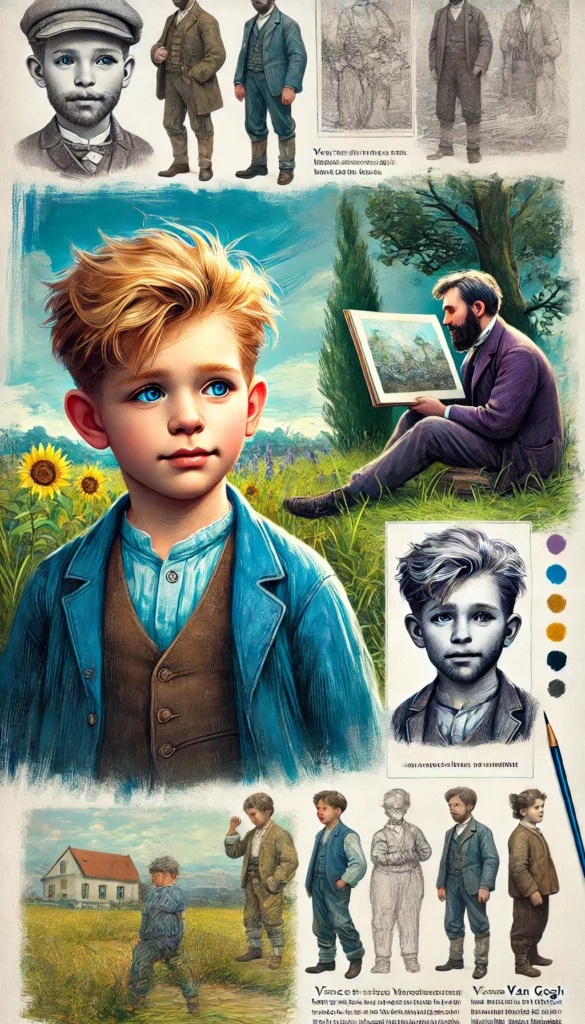
The Artistic Evolution of Vincent van Gogh
The Influence of Impressionism
In Paris, Vincent was introduced to the works of artists such as Claude Monet, Camille Pissarro, and Edgar Degas. The Impressionists’ vibrant colors and loose brushwork inspired Vincent to experiment with new techniques and a brighter palette. This period marked a significant turning point in his artistic development.
The Role of Theo van Gogh
Vincent’s younger brother, Theo van Gogh, was more than just a sibling; he was Vincent’s confidant, supporter, and financial lifeline. Theo’s belief in Vincent’s talent provided the emotional and financial support necessary for Vincent to pursue his art. Their correspondence offers invaluable insights into Vincent’s thoughts, struggles, and artistic philosophy.
Evolution of Style
Vincent’s style evolved from his early works’ dark, somber tones to the vibrant, expressive use of color that defines his later pieces. His bold, dynamic brushstrokes created a sense of movement and emotion, capturing the essence of his subjects in a revolutionary way for his time.
Vincent’s early works, such as “The Potato Eaters,” are characterized by their dark tones and depictions of peasant life. These paintings reflect his deep empathy for the working class and his desire to portray their struggles with authenticity and dignity.
Transition to Brighter Colors
After moving to Paris, Vincent’s palette lightened significantly. His works began to feature the vibrant colors and dynamic compositions he is best known for today. Paintings like “Sunflowers” and “Irises” exemplify this shift and showcase his innovative use of color.
Techniques and Methods
Vincent’s techniques were innovative and often unorthodox. He used color to convey emotion, layered paint thickly to add texture, and employed a swirling, rhythmic brushwork that became a hallmark of his style. His method was intuitive and deeply personal, reflecting his inner turmoil and passion.
Use of Color
Vincent’s use of color was both symbolic and expressive. He often used complementary colors to create vibrant contrasts and convey emotional intensity. His surroundings and his emotional state profoundly influenced his choice of colors.
Brushwork and Texture
Vincent’s brushwork was dynamic and varied, ranging from bold, sweeping strokes to delicate, intricate details. He frequently applied paint thickly, creating a rich texture that added depth and dimension to his works.
Development and Artistic Breakthroughs
Major Works and Themes
Some of Vincent’s most famous works include “Starry Night,” “Sunflowers,” and “The Bedroom.” Each piece reflects his intense emotional state and his ability to transform everyday scenes into profound, expressive art. His themes often revolved around nature, everyday life, and personal struggle.
Major Works and Themes
Starry Night
“Starry Night” is perhaps Vincent’s most iconic painting. Created during his stay at the Saint-Paul-de-Mausole asylum, the painting depicts a swirling night sky over a tranquil village. The intense movement of the sky contrasts with the stillness of the town, capturing the turbulent emotions Vincent experienced at the time.
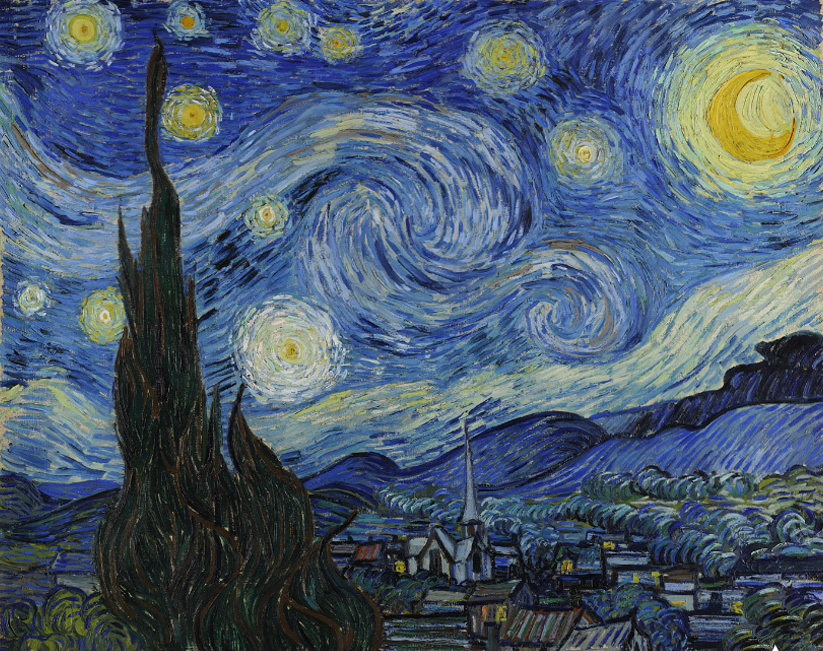
Major Works and Themes
Some of Vincent’s most famous works include “Starry Night,” “Sunflowers,” and “The Bedroom.” Each piece reflects his intense emotional state and his ability to transform everyday scenes into profound, expressive art. His themes often revolved around nature, everyday life, and personal struggle.

Sunflowers
The “Sunflowers” series celebrates life and color. Vincent painted these works as a symbol of gratitude and hope, intending them to decorate his friend Paul Gauguin’s room. The vibrant yellows and dynamic composition reflect Vincent’s admiration for nature’s beauty.
The Bedroom
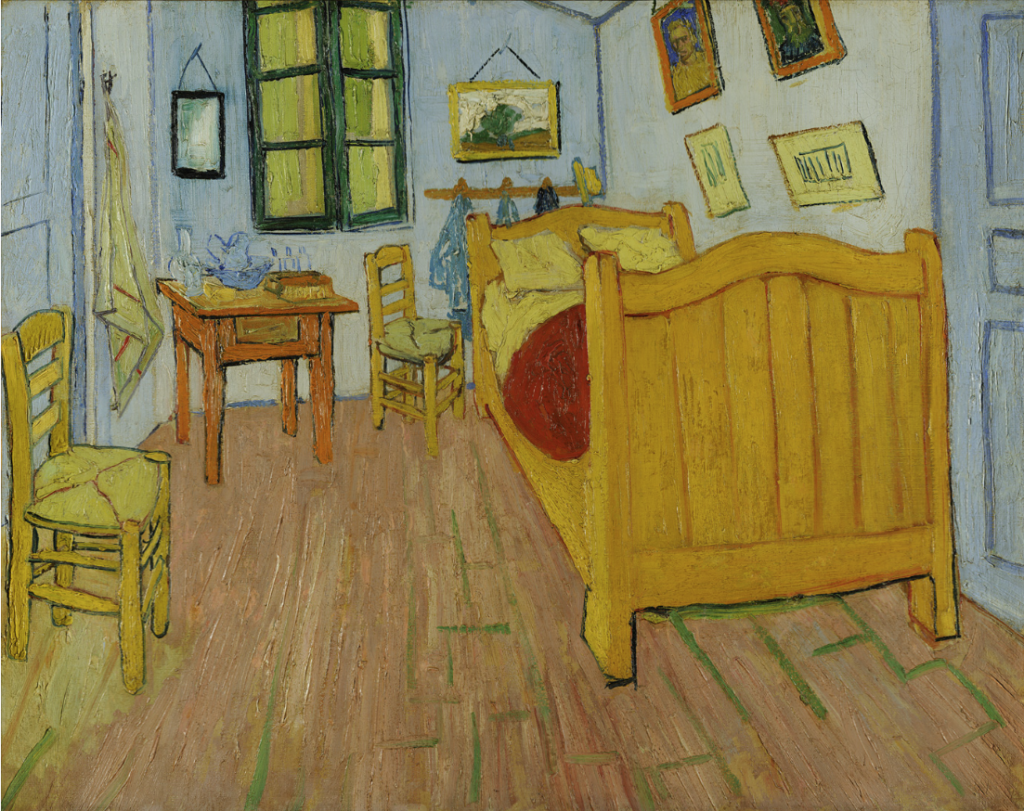
“The Bedroom” is a profoundly personal work depicting Vincent’s bedroom in Arles. The painting’s simplicity and color convey a sense of calm and intimacy, offering a glimpse into Vincent’s private world.
Enigmatic Stories and Rumors
Vincent’s life was not without its share of enigmatic stories and rumors. His relationship with Gauguin, his infamous ear incident, and his tragic death by suicide are shrouded in mystery and speculation, adding to the intrigue surrounding his legacy.
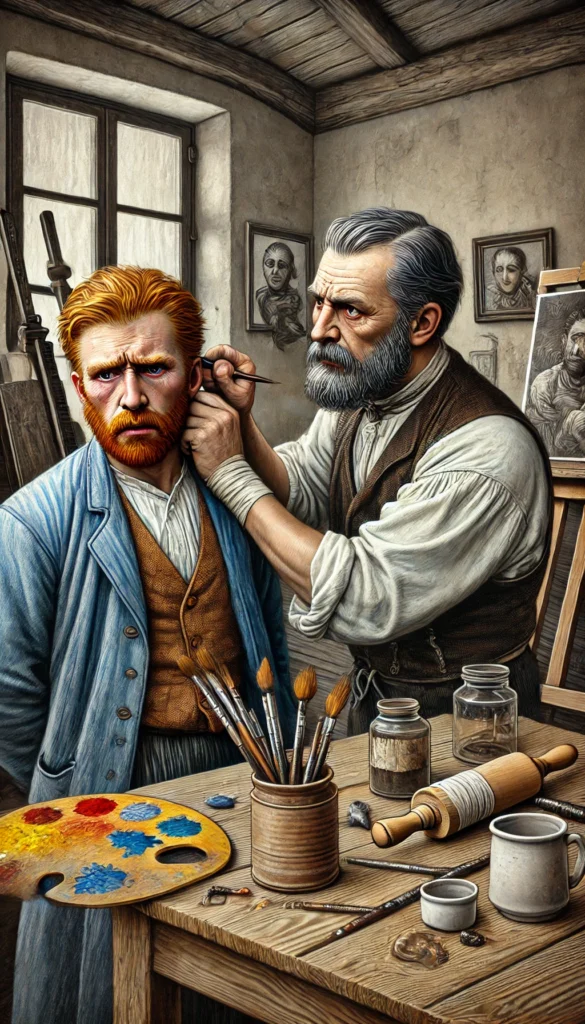
The Gauguin Incident
Vincent’s relationship with Paul Gauguin was both inspiring and tumultuous. The two artists lived together in Arles, but their differing temperaments led to frequent conflicts. The infamous incident in which Vincent cut off part of his ear occurred after a heated argument with Gauguin, adding a dramatic chapter to his life story.
The Mystery of His Death
Vincent’s death at the age of 37 remains shrouded in mystery. While many believe he died by suicide, shooting himself in the chest in a wheat field in Auvers-sur-Oise, recent theories suggest a different scenario. Authors Steven Naifeh and Gregory White Smith, in their 2011 biography “Van Gogh: The Life,” propose that local boys carrying a malfunctioning gun may have accidentally shot Vincent. According to this theory, Vincent, who had an unusual wound for a self-inflicted shot and left no suicide note, might have chosen to protect the boys by claiming he had shot himself. On his deathbed, he reportedly told his brother, Theo, “Do not accuse anyone… it is I who wanted to kill myself.” This theory adds an element of mystery and speculation to the tragic end of his life, reflecting the complex and enigmatic nature of Vincent van Gogh’s story.
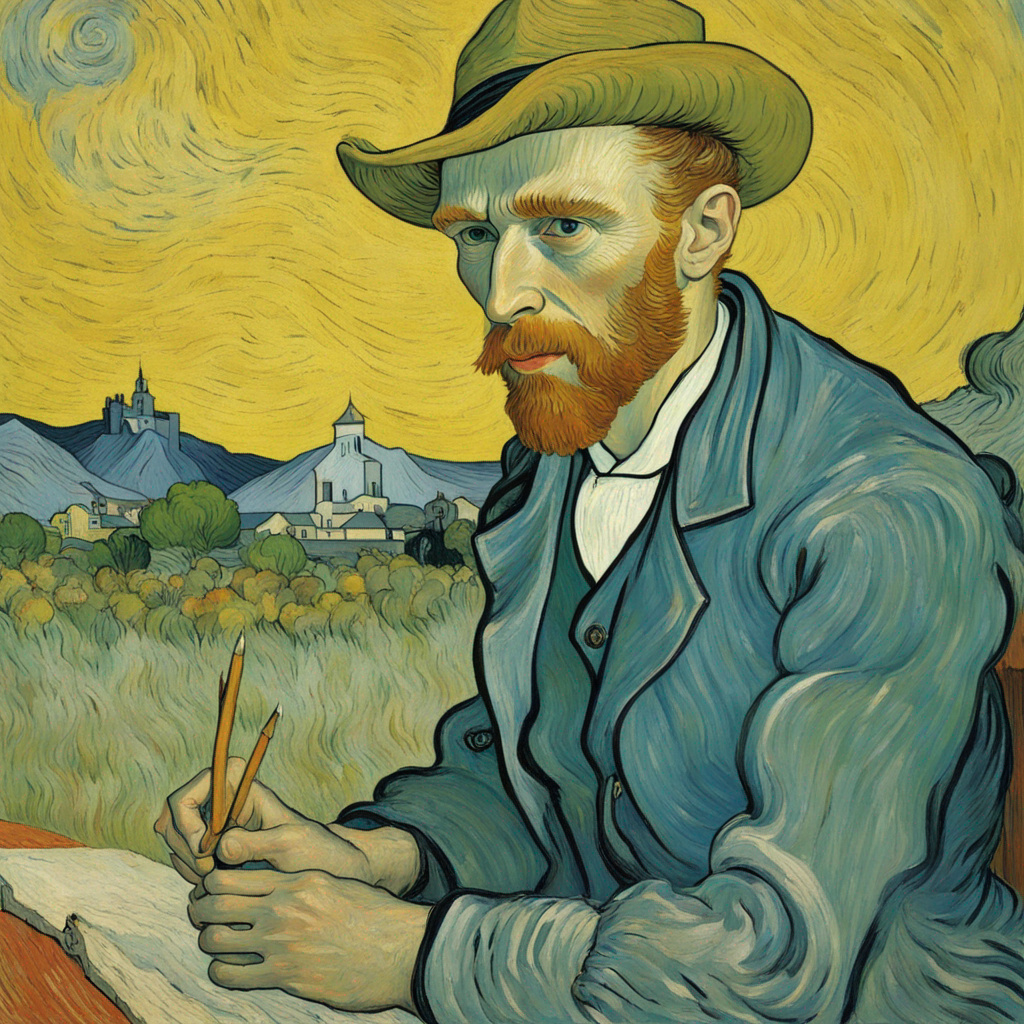
Lifetime Achievements
Despite his struggles and lack of recognition during his lifetime, Vincent’s work has profoundly impacted the art world. His innovative techniques, emotional depth, and unique vision have inspired countless artists and continue to captivate audiences today.
Posthumous Recognition
Vincent’s work gained recognition after his death, largely thanks to Theo’s widow, Johanna van Gogh-Bonger. She tirelessly promoted his work, organizing exhibitions and publishing their correspondence, which helped to establish Vincent’s reputation as one of the greatest artists of all time.
Influence on Modern Art
Vincent’s influence on modern art is immeasurable. His use of color, texture, and expressive brushwork paved the way for movements such as Fauvism and Expressionism. Artists like Henri Matisse and Edvard Munch have cited Vincent’s significant influence on their work.
Modern Context and Relevance
Online Art and Van Gogh
In today’s digital age, van Gogh’s work is more accessible than ever. Online art galleries and platforms have allowed art lovers to buy art online, including prints and reproductions of van Gogh’s masterpieces. This accessibility has helped to cement his status as a beloved figure in the art world.
Online art galleries are crucial in bringing van Gogh’s work to a global audience. Websites dedicated to his art provide high-resolution images, detailed descriptions, and historical context, allowing viewers to explore and appreciate his work from anywhere in the world.
The Market for Van Gogh Prints
The demand for van Gogh prints remains high, with art collectors and enthusiasts eager to own a piece of his legacy. Online platforms offer a wide range of options, from high-quality reproductions to unique art pieces inspired by his work, making it easier than ever to buy art online.
The Role of Online Galleries
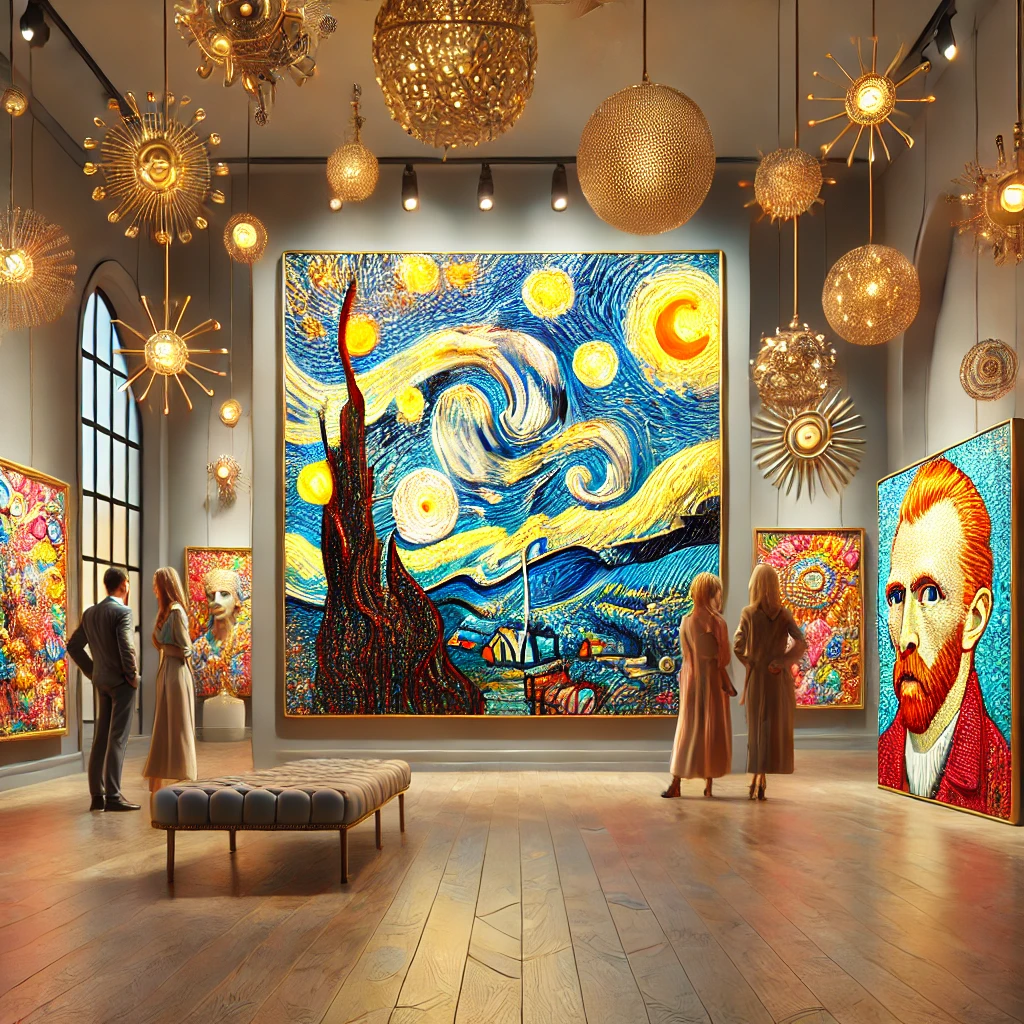
Art Collectors and Contemporary Art Trends
Vincent van Gogh’s work remains highly sought after by art collectors. His unique art pieces, characterized by their emotional depth and innovative techniques, are considered valuable assets in any collection. Modern art trends continue to draw inspiration from his style, and assemblage art and mixed media art often pay homage to his groundbreaking techniques.
The Appeal to Art Collectors
Art collectors admire van Gogh’s work for its historical significance, emotional intensity, and artistic innovation. They view owning a van Gogh piece, whether an original or a high-quality reproduction, as a prestigious addition to any collection.
Influence on Modern Art Trends
Van Gogh’s influence is evident in many contemporary art trends. His use of color, texture, and expressive brushwork has inspired artists across various mediums, including painting, mixed media, and assemblage. Modern artists often reinterpret his style, creating unique art pieces that pay homage to his legacy.
Artistic Inspiration and Process
Vincent’s artistic process and inspiration are subjects of great interest to contemporary artists. His ability to find beauty and meaning in everyday life, his dedication to his craft despite immense personal challenges, and his innovative use of color and form continue to inspire new generations of artists.
Vincent’s ability to transform ordinary scenes into extraordinary works of art is a testament to his unique vision. He found inspiration in the world around him, whether it was a field of wheat, a starry night, or a simple vase of sunflowers. This ability to find beauty in everyday life continues to inspire artists today.
Finding Beauty in Everyday Life
Dedication to Craft
Vincent remained dedicated to his craft despite facing numerous personal and professional challenges. Despite adversity, his relentless pursuit of artistic excellence is a powerful example for contemporary artists. Many artists strive to emulate his commitment to his work and his willingness to experiment with new techniques and styles.
Unique Art Pieces and Modern Interpretations
Modern artists frequently reinterpret van Gogh’s work, creating unique art pieces that blend his iconic style with contemporary themes. This ongoing dialogue between the past and present highlights the timeless nature of his art and its enduring impact on the art world.
Artists worldwide continue to be inspired by van Gogh’s work, creating contemporary reinterpretations that blend his distinctive style with modern elements. These unique art pieces often explore new themes and techniques while paying homage to van Gogh’s originals’ emotional depth and innovative spirit.
Contemporary Reinterpretations
The Timeless Appeal of Van Gogh
The timeless appeal of van Gogh’s work lies in its ability to resonate with viewers across different cultures and eras. His paintings capture universal emotions and experiences, making them relevant and accessible to modern audiences. This enduring relevance ensures that van Gogh’s legacy will continue inspiring and captivating future generations.
The Intersection of Art and Modern Life
Art in Argentina and Global Influence
Vincent van Gogh’s influence extends far beyond Europe. His work has inspired artists globally, including in Argentina, where the vibrant art scene continues to celebrate his legacy. Argentine artists, including those who create Messi fan art, often draw inspiration from van Gogh’s emotive style and innovative techniques.
Van Gogh's Global Impact
Van Gogh’s work impacts art communities worldwide. In Argentina, many contemporary artists embrace his expressive use of color and bold brushwork. This global appreciation for van Gogh’s art underscores his universal appeal and enduring legacy.
Contemporary Argentine artists often draw inspiration from van Gogh’s techniques and emotional intensity. For example, Messi fan art artists may incorporate van Gogh’s swirling brushwork and vibrant colors to capture the legendary footballer’s dynamic energy and passion. This fusion of past and present highlights the ongoing relevance of van Gogh’s artistic innovations.
Contemporary Argentine Artists
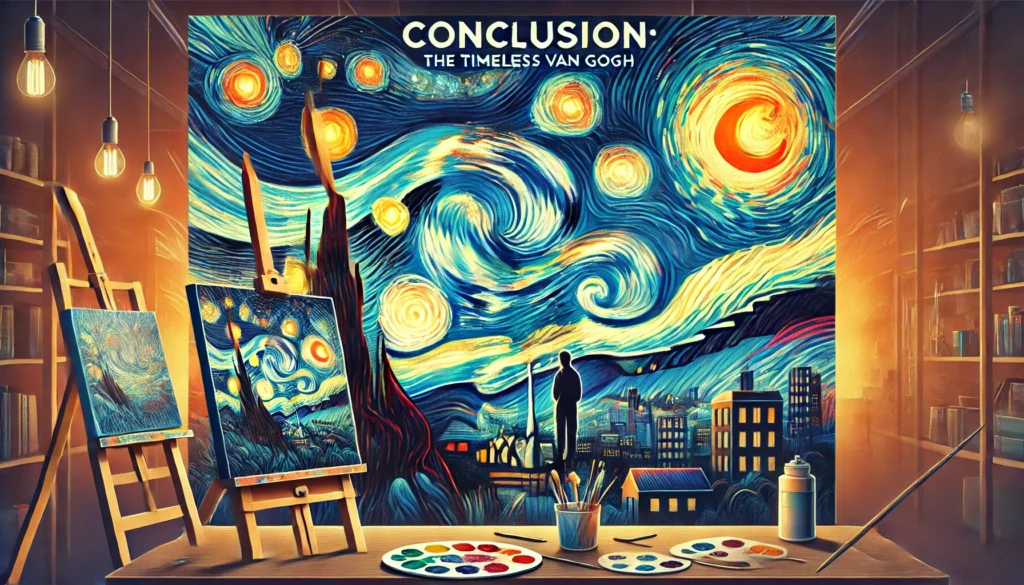
Conclusion: The Timeless Legacy of Vincent van Gogh
Vincent van Gogh’s life and work are a testament to the power of creativity and perseverance. His journey, marked by profound struggles and incredible achievements, inspires and captivates audiences worldwide. As we celebrate his legacy, we also recognize how his art continues to resonate in the modern age, bridging the gap between the past and the present.
Vincent van Gogh’s ability to transform his inner turmoil into breathtaking works of art has left an indelible mark on the world. His innovative techniques, emotional depth, and unique vision have influenced countless artists and continue to shape today’s art world. Whether through online art galleries, contemporary reinterpretations, or the timeless appeal of his original works, Vincent van Gogh’s legacy endures, reminding us of the enduring power of art to move and inspire.
